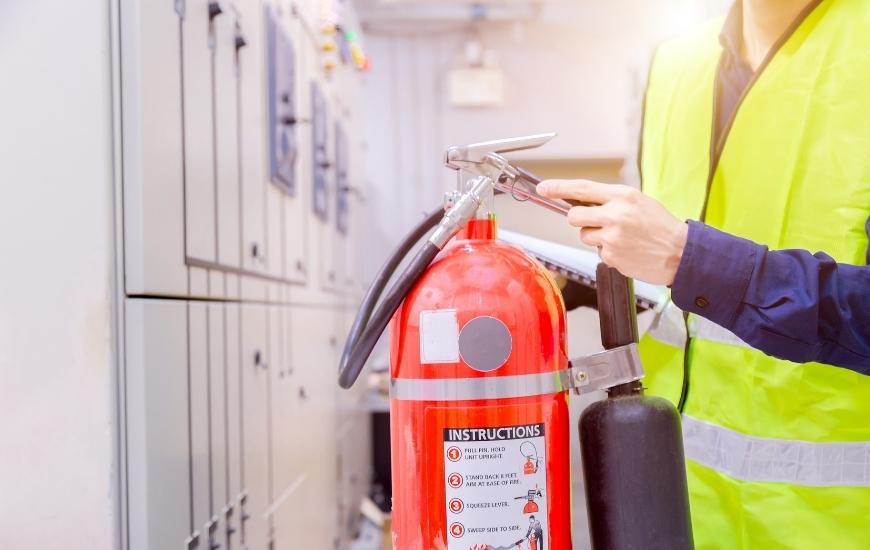Fire extinguishers are an important part of any business or workplace. They can help save lives and property in the event of a fire. It is therefore essential that they are properly maintained and inspected on a regular basis. In this blog post, we will provide a comprehensive guide to Fire Extinguisher Inspections. We will discuss why they are important, who should perform them, and how often they should be done.


How Does It Work?
A fire extinguisher is typically the first line of defence against fire, whether you are at home or in your business. In an ideal world, you would never have to utilize a fire extinguisher. However, things do go wrong from time to time, and in those situations, a fire extinguisher may be required. You want to make sure that your fire extinguisher is in good working order and will be able to do its job when you need it most.
There are a few different types of fire extinguishers, each designed for different kinds of fires. The most common type is the ABC fire extinguisher, which can be used on Class A, B, and C fires.
Regularly scheduled fire extinguisher inspections provide you peace of mind that, if required in the event of a fire, your extinguisher works as it should and provides the protection you require.
In this article, you will learn the following:
- What is the best method for testing fire extinguishers? When should we have our fire extinguishers serviced?
- The procedure for conducting fire extinguisher inspections.
- Tips to ensure the extinguisher will work when needed.
How Often Should We Have Our Fire Extinguishers Inspected?

You'll need to know how often your fire extinguishers should be inspected. The National Fire Protection Association offers standards and guidelines for the inspection of portable fire extinguishers.
- In commercial or industrial premises, a specific member of your staff or a Fire & Safety company like Reliable Fire and Safety must conduct monthly inspections.
- All portable fire extinguishers must be checked by a certified fire extinguisher technician every year.
- Dry chemical extinguishers should be inspected and refilled every six years.
- At the end of 12 years, dry chemical extinguishers must be subjected to a full hydrostatic test.
- Every five years, inspect your kitchen and water extinguishers.
We offer free consultations, and we can help you schedule your inspections! Please contact us with concerns regarding how to arrange your inspections.
The procedures for performing extinguisher inspections are as follows:
Visual Inspections Include:
- Make sure your fire extinguishers are in their proper positions.
- Look for any physical damage indicators.
- Confirm that the pressure gauge is in the "ON" position.
- Examine the pull-pin.
- Check the weight of the extinguisher to ensure it is full.
- Inspect the extinguisher nozzle for any potential blockages.
Visual Inspections Include:
- Examine the mechanism of all your fire extinguishers.
- Recharge and test for discharge.
- Testing for hydrostatic pressure on a regular basis.
TIP: Always maintain comprehensive record-keeping for all fire safety inspections.
You can do a few things to make sure the extinguisher works when you need it.
In the case of a fire, you'll only need a fire extinguisher if it's required. You should make sure that you have easy access to a fully functional fire extinguisher in the event of a fire emergency. To ensure that your fire extinguishers are reachable when they're needed, follow these instructions:
- Ensure that all fire extinguishers are readily accessible at all times. Never obstruct access.
- Exacerbating factors can be avoided by keeping fire extinguishers within reach.
- Make sure your staff has easy access to all of your fire extinguishers. Consider the height and accessibility restrictions for each of your employees.
- Ensure that all personnel are aware of all fire extinguisher locations and know how to use them correctly.
Final Thoughts
Having your fire extinguishers tested and maintained by experts is crucial. Our service and inspection services ensure that you will have functioning fire extinguishers in an emergency. Please contact our fire staff now and get ready for more information about our fire extinguisher inspection services!

Posted by: Angela Wilkins
Angela is a web developer, content writer, blogger at the team of Toronto Web Design.